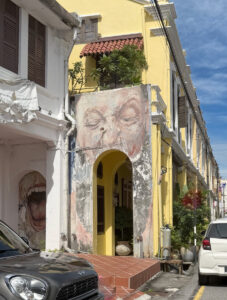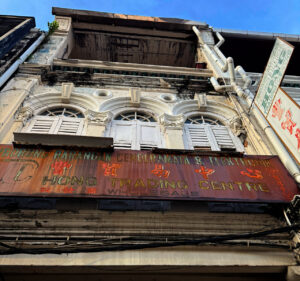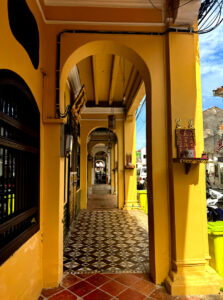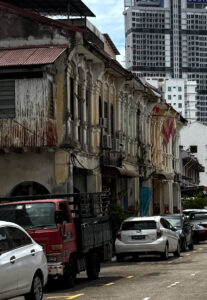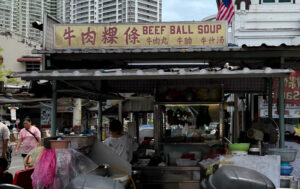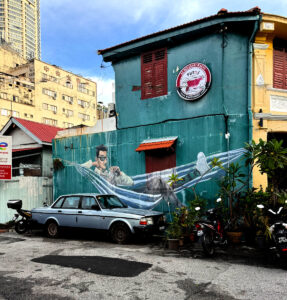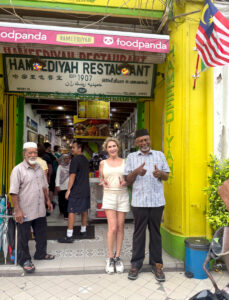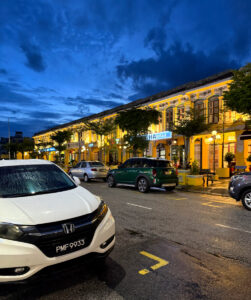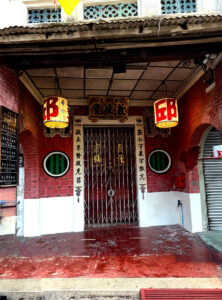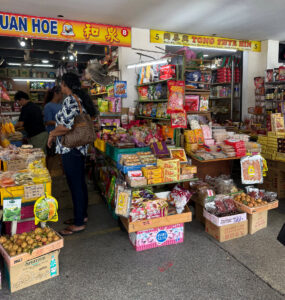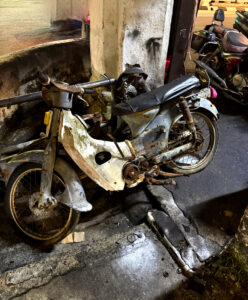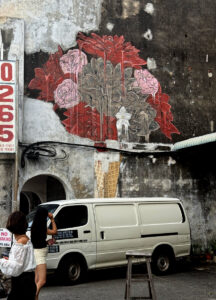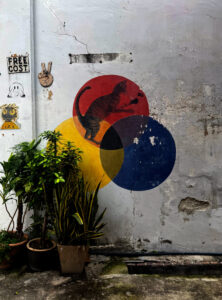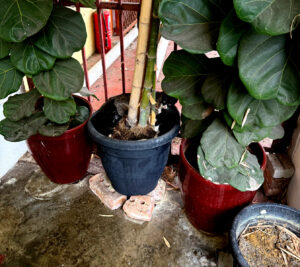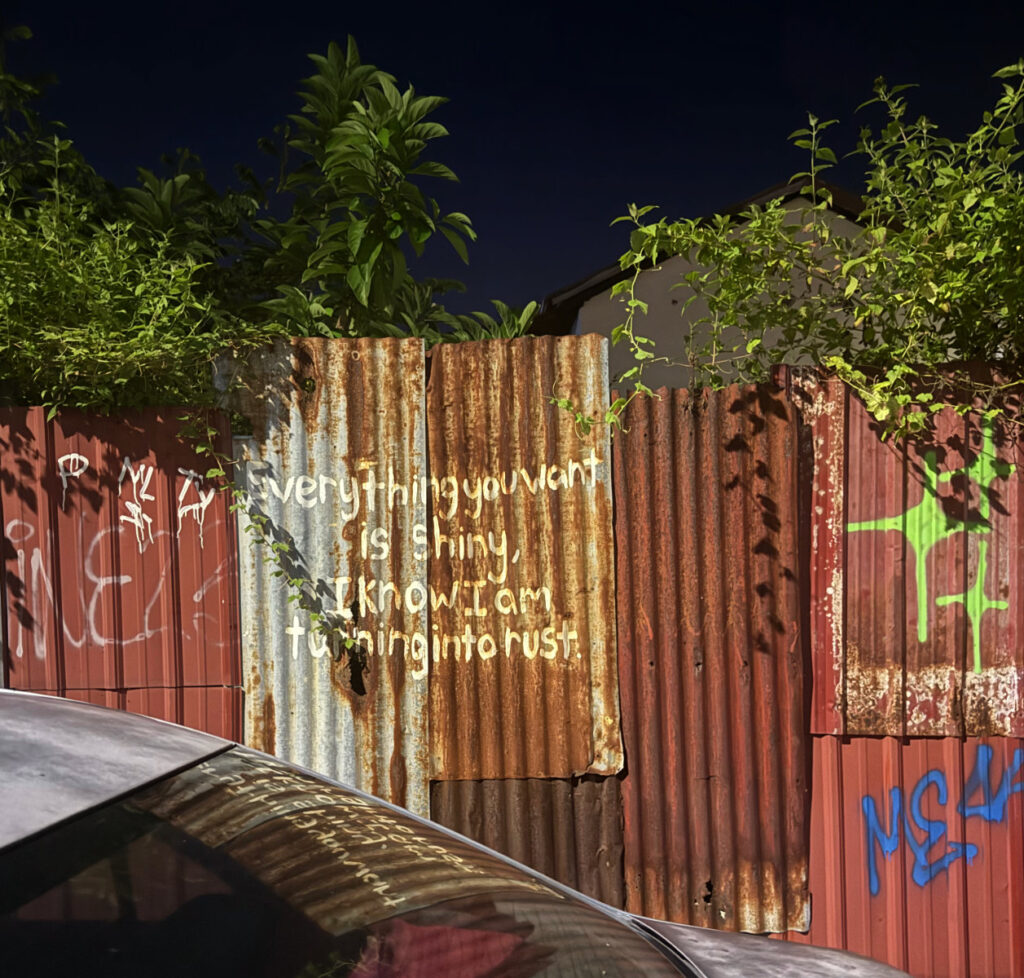Francis Light Penang history
The year was 1776. While George Washington, Thomas Jefferson, and Alexander Hamilton were drafting the Declaration of Independence and severing political ties with Britain, across the ocean Francis Light — a former Royal Navy midshipman turned merchant captain — was charting a very different course. Seeking the cliched fortune and fame, he sailed east, spending the decade between 1776 and 1786 building trade relations and mastering the waterways of Thailand and Malaysia.
This creative retelling draws from factual sources about Penang, Malaysia, and is re-imagined here with a nod to musical interpretation in the spirit of Lin-Manuel Miranda.
Our story begins on the morning of Captain Francis Light’s 31st birthday.
Light knew the day would be momentous. Studying his reflection in a battered mirror — or what passed for one aboard ship — he recited his own private creed: You are good enough, you are smart enough, and dammit, people like you.
After twelve years at sea, the stage was set. Southeast Asia’s rich harbors awaited. Only he, he believed, had the cunning and grit to carve out a lasting British foothold.
“Listen up, oh Mighty King G.” Light practices his first words in his head as the king’s guards lead him to the feet of the Grand Poobah, the one and only King of Britain, George III. WTF? He’d heard the “mad king” talk circulating through the villages, but watching his supreme leader taking a dump while claiming to be atop his royal throne gave Captain Light pause.
“With no British settlements in the Orients,” he stammers, “it’s time to establish a strategic naval base and free port in Southeast Asia. We can protect and control the lucrative tin trade as well as maintain dominance over the Dutch and the bloody French.” Francis didn’t need to mention the unfortunate loss of the Revolutionary War for impact. Britain needed to solidify its stronghold on the world, and George knew it. Or at least Light hoped he did.
The weary king gives a distracted green Light to Francis’s Penang suggestion. Light exhales in relief. His majesty has no clue Penang was just one giant swamp, filled with mangroves, snakes, monitor lizards, and pirates — lots of pirates.
With the OK from the big cheese, Francis arranges a tea time with his buddy, the Sultan of Kedah, to discuss all things Penang.
“Hey SK, what up dog? So listen, I just got the thumbs up from the Commander-in-Chief. Give us that uninhabitable marsh of nothingness, we’ll pay you some Spanish coins, and the British Army will protect you from both the Siamese and the Burmese, ready to strike your peninsula at any moment.”
The Sultan of Kedah tells Light: “Hell to the ya.” And with that, the very first British colony in the Far East was established. Now how to make this big ol’ swamp hole a viable trading port? Light thinks to himself… Rumor has it (and as I’m opposed to anything less than truth-telling, having no living resources to fact-check against, I’ll allow its print) that Light loaded cannons with gold coins and shot them into the swamps as incentive for anyone who dared to clear the land quickly.
Three years later, in a now-habitable village called George Town, its namesake King George says, “I did not give my approval to protect the lot of you,” leaving the Sultan of Kedah no choice but to gather the Dutch and whatever pirates were still hanging about to reclaim his land. Ultimately, the British prevailed. To this very day, the Penang Government still pays the Sultan of Kedah an annual sum of approximately $4,000 to honor the original agreement.
Light becomes the founder of the swampy, pirate-ridden expanse of mangroves, transforming it into a thriving duty-free trading port — a crossroads of great civilizations, a melting pot of the East. Traders and settlers came from Europe, India, China, the Malay Archipelago, Thailand, and Burma, and made George Town home. A brief Japanese occupation during WWII left some a few, and for a time Armenians settled one small area of G Town, their presence honored today with Armenia Street.
The Street of Harmony, one of the oldest in George Town, has a church, mosque, Hindu, and Taoist temples — all visible on this one street. Diverse cultures and beliefs coexist peacefully, blending influences while respecting individuality since 1768.
What I find fascinating about George Town is the organic unfolding of an unintentional democracy. Captain Light had no lofty intentions of creating a new nation free from British Rule. His motives were purely Capitalistic. He created a port free of taxation allowing any and everybody to prosper. Light was no angel but neither were Americas founders and for that matter neither is anyone reading or writing this post.
Even the man with the greatest virtue will piss somebody off.
Captain Francis Light whatever his motives be, created a society I imagine America’s Founding Fathers envisioned. That environment continues to exist today without a Bill of Rights, Declaration of Independence, or any written Constitution.
Because of this unique cultural landscape and architecture, in 2008 George Town was designated a UNESCO World Heritage Site.
Then in 2012, the George Town Festival committee commissioned Lithuanian artist Ernest Zacharevic’s interactive murals reflecting local life and diversity. What started with six murals ballooned into more than twenty, creating a scavenger-hunt vibe for tourists eager to find them all.
Not able — nor particularly trying — I snapped up the ones I did find, along with a few that may or may not hold any historical significance.
I did, however, manage to locate the very famous three-dimensional mural: a little boy painted on a wall, grabbing for a square window while teetering on a real wooden stool placed beneath him. Just so happens I was holding the same pose — reaching for a teeny kitten perched on a narrow tin roof, meowing for his life. With two girls looking on, ready to assist, I scaled the wall only to find myself just out of reach.
I look for anything to stand on. Should I grab that little chair the mural boy was “standing” on? Damn, it was tempting — but if I break it, I’d be defacing UNESCO property. A stint in a Malaysian jail would be an adventure, no doubt. Instead, I commandeer a bike stashed in a nearby corner.
With the kitten back on terra firma, my wrist clawed and bloody from my gallant efforts and my new shorts smeared in dirt, I head back toward the hotel. Passing through Little India, I’m pulled off the sidewalk by a very effusive Indian gentleman who guided me into a nearby food stand.
“Here, here, you must try!” he exclaims
I laugh at his joyous effervescence as he drags me into a small, crowded restaurant with a line out the door. He ushers me to the front, where all the dishes are proudly described.
Giggling, I say, “I’m so sorry — it all looks amazing, but I ate not long ago.” The guy who’d dragged me off the street? Turns out he owned the place. Everyone laughs knowingly.
That exchange totally made my day. What a kick in the pants this guy is. I insist on photos, which he happily obliged, though not before grabbing his hat. We snap a few shots, and I half-skip my way to a wine store on the way back to my hotel.
Dear Lord, It’s hot. I pick out the cheapest bottle of white — no way am I sucking down a red in this sauna. Unfortunately white wine reaches boiling point in the same amount of time. I’ll have to stop at 7-Eleven for a cup of ice. Do not want to scorch my mouth.
Twelve blocks later, sweat pouring down my body, the thought of walking another six blocks to 7-Eleven for ice breaks me. I duck into a shack hoping they might have some. Seeing none in the cooler, I start to walk away. “Three ringgit,” the man said. “OK, sure, whatever.”
Fine — it saved me the trek. He scoops the ice out of a receptacle and drops it into a plastic bag. For a millisecond, I question the cleanliness. My impending heat stroke convinces me it’s fine: I’m pouring alcohol over it — that’ll kill whatever bacteria’s swimming around.
Back in my room, soaked from hours in this never-ending humidity factory, I throw the ice into the only vessel available — a coffee cup — pour in some wine, and jump into the shower. One gulp before, one gulp after. Exhausted, I collapse into bed. Four hours later, groggy, head spinning I stumble back out of bed and straight to the toilet – a violent reminder that while George Town may have been built without a constitution, mine has just completely lost its own.
Living Like I’m Dying travel blog by Lary Kennedy | Francis Light Penang history | George Town heritage | Penang Malaysia travel story | Southeast Asia travel writing | Living Like I’m Dying Malaysia series
